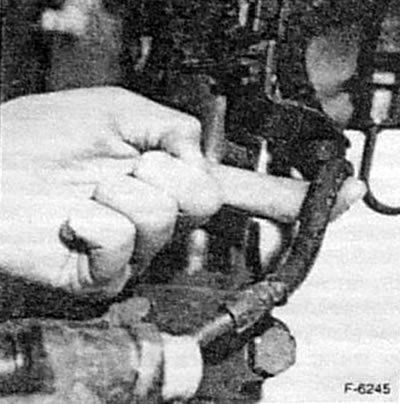Clean the brake lines with a cleaning agent.
Attention: The brake pipes are protected against corrosion by a layer of polyethylene. If this layer is damaged, corrosion of pipelines may begin. For this reason, brake lines must not be cleaned with a wire brush, sandpaper or a screwdriver.
Brake pipelines from the main brake cylinder to the wheel brake cylinders should be illuminated with a pump and checked. The master brake cylinder is located in the engine compartment under the brake fluid reservoir.
Brake lines must not be bent. nor twist. They should not have recessions of rust or scuffs. Otherwise, replace the entire piping up to the next connector point.
Brake hoses connect the brake pipes to the wheel brake cylinders located on the moving parts of the vehicle. They are made of high pressure material but can become porous over time, swell or be cut with sharp objects. In all such cases, the brake hoses must be replaced immediately.

Bend the brake hoses by hand in all directions to check for damage. Brake hoses must not be twisted.
Turn the steering wheel right and left as far as it will go. In this case, the brake hoses in any position should not touch the parts of the car.
Places of connections of brake pipelines and hoses should not have traces of protruding brake fluid.
Attention: If the expansion tank and seals are wet from the protruding brake fluid, then this is not an unconditional evidence of a defect in the master brake cylinder. Most likely, the brake fluid could have entered through the vent in the cap or through the reservoir cap seal.
Lower the car.
Visitor comments